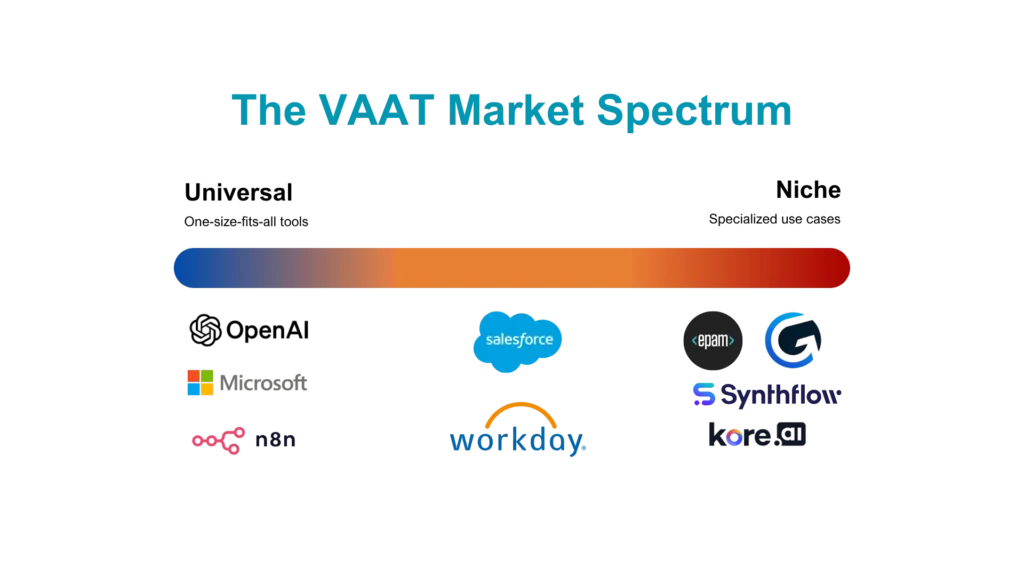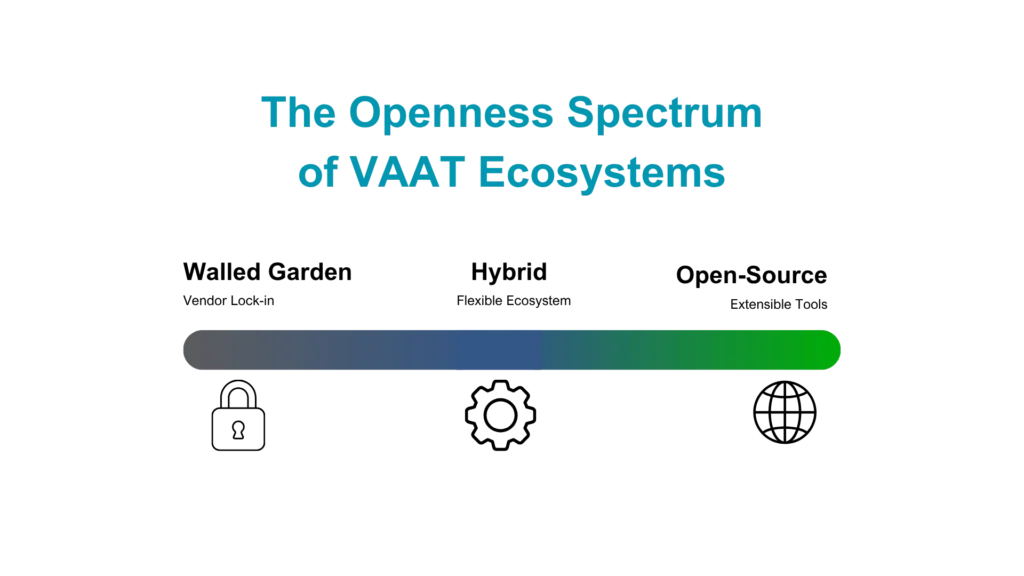A recent MIT study showed that 95% of AI projects fail to deliver value, pinning this largely on learning curve issues. This created a mandate for AI-focused companies to make agent building easier. OpenAI has responded with AgentKit, a tool they call “Canva for agents”. The term “kit” further implies simple assembly of components like a model car kit. Simplicity and time-to-value are the name of the game now, but extensibility is also critical.
It appears that simplicity is achieved through three primary ways: (1) simple UI; (2) focus on leveraging OpenAI assets (e.g. LLM) which the competition is framing reduced choice; (3) using AI to fill the gaps in the build process automatically. The last of these is a good bet because it rides the technology curve, anticipating AI improvements to smooth over any rough edges.
AgentKit is a move by OpenAI to leverage their massive installed base for ChatGPT and deliver more automation, extending their market beyond individual/consumer into more of an enterprise focus. This is where the bulk of the money will be made, especially as AI pricing, driven by rapidly rising power and infrastructure costs, will continue to increase. Look for OpenAI and others to continue to target enterprise customers.
OpenAI appears to be focused on a universal or one-size-fits-all Visual Agentic AI Tool (VAAT) along with n8n, Microsoft and Google. Some large horizontal ISVs like Salesforce and Workday provide VAATs for their ecosystems, while vertical ISVs focus on their industries, and savvy startups focus on specific use cases. This market spectrum is interesting to monitor, as companies gain traction in specific areas, resulting in de facto specialization.

There is another spectrum worth watching, which is the closed or walled-garden approaches keeping customers in their ecosystem. AgentKit seems to favor the OpenAI LLMs in order to simplify build and deploy functions, but enterprises may avoid vendor lock-in. AgentKit’s support for multiple library languages (python, node, javascript and go) is a pleasant addition though, it provides more flexibility for add-on components. In the middle of this spectrum are tools that while not fully open-source do provide more broad support for tools and deployment flexibility. At the far end of this spectrum are fully open-source tools like Langflow and Flowise.

Watch for competing LLM-focused companies like xAI, Anthropic, Meta, and others to provide similar tools. Meta seems to be positioning themselves as the open-source challenger, so they may leverage existing open-source tools like Langflow or Flowise. xAI seems to be riding the tech/compute wave, so they will probably lean heavily toward chat-to-agent approach, which is analogous to what we’re doing for components at TeamsFlow.
I find it valuable when a new tool launches from a tech leader like OpenAI, to see how they position themselves (strengths) and compare that against how their existing competition frames their weaknesses. The following table is a composite of this insight:
| Aspect | Advantages | Disadvantages |
| Prototyping & UX | Rapid visual canvas + ChatKit reduces frontend work; weeks to minutes for builds. | Opinionated design may limit complex branching; users drop to code for edges. |
| Integration & Connectors | Built-in registry for secure, governed tools; easy for OpenAI stack users. | Narrower initial coverage vs. Zapier's thousands; risks lock-in to OpenAI models/APIs. |
| Evaluations & Observability | Native tracing, guardrails, and evaluations (including reflection) for reliability—first-class for iteration. | Lacks mature CI/CD, rollback, or RBAC; production gaps vs. enterprise tools like UiPath. |
| Customization | Supports custom tools in Python/Node.js/Go; hybrid visual-code path. | Not fully no-code for advanced logic; less flexible than open-source like Langflow. |
| Deployment & Security | Enterprise ambition with governance; beta registry for data control. | No local/offline hosting; privacy concerns vs. self-hosted options like n8n/Flowise. |
Each of these tools is attempting to build critical mass in their areas of focus by leveraging their respective strengths. OpenAI’s strengths include tight integration with their LLMs and other tools, their massive user-base of ChatGPT users, and their brand as tech leaders. They are certainly one to watch. At the same time, this attempt to woo both users and developers puts them in direct competition with their historic benefactor, Microsoft. Of course this sort of hybrid competition/cooperation, or as Novell’s Ray Noorda called it “Coopetition”, could get interesting. Microsoft has already built SLMs like Phi-3 and, in a move that surely anticipating this, they partnered with Anthropic in an attempt to win the hearts of developers and for LLMs in CoPilot. As you may know from my prior writing, I believe that the combination of powerful and efficient SLMs distilled from LLMs, DeepSeek’s innovation in Mixture of Experts (MOE), mass distribution via Windows/Mobile Phones is the killer combination to win the masses.
With more VAATs, like AgentKit, the value proposition for a universal component building tool like TeamsFlow only increases. We solve AgentKit's lock-in while riding its wave in the VAAT market. In the near-term, expect more components in AgentKit’s ecosystem for us to bridge. Longer-term our solution for accelerated component building will democratize the process by eliminating the need for coding expertise. We’ll continue to provide the tools, while the massive tech companies fight for VAAT market share.
Stay tuned here for more technology and market insights in this exciting gold rush of a market.

Subscribe to our newsletter to receive the latest updates and promotions from MPH straight to your inbox.